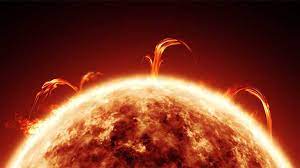Monitoring Desk
FLORIDA: The dream of fusion power is tantalizing. The ability to sustain nuclear fusion easily and efficiently would offer the world vast amounts of non-polluting clean energy.
And that dream took another step toward being realized this week after a team of scientists replicated a promising experiment.
A replication is not a first-time discovery, but it is perhaps as important in science, despite the lack of fanfare most replications will ever receive.
Here’s what happened: In December 2022, researchers at Lawrence Livermore National Laboratory generated headlines when they announced they had successfully caused a nuclear fusion reaction that gave out more energy than it took to achieve.
The process involved firing 192 lasers at a capsule of the size of an M&M — the capsule vaporized, sending X-rays toward an even smaller capsule made of two forms of hydrogen, called deuterium and tritium.
The hydrogen atoms fused, and the process resulted in the generation of 3 megajoules of energy — more than the 2.05 megajoules that it had required to execute.
Now, in a new report published on their website, the same researchers say their results weren’t a fluke and they have repeated the experiment at least three times, generating even larger amounts of energy.
Fusion is the opposite of fission, the process currently used in nuclear power plants and weapons.
While fission tears atoms apart, generating energy in the process, fusion smashes atoms together at high energy levels, combining them into a new, larger atom.
The fission process generates nuclear waste — large amounts of unstable material that can remain radioactive for millions of years.
But fusion doesn’t generate that kind of waste — hydrogen atoms combine to make helium — making it a Holy Grail of clean power, and a potential game changer when it comes to combating climate change.
Of course, there is a catch: It takes enormous amounts of power to generate a fusion response — in most cases, more power than the fusion actually generates. That is, until last year’s successful LLNL experiment.







